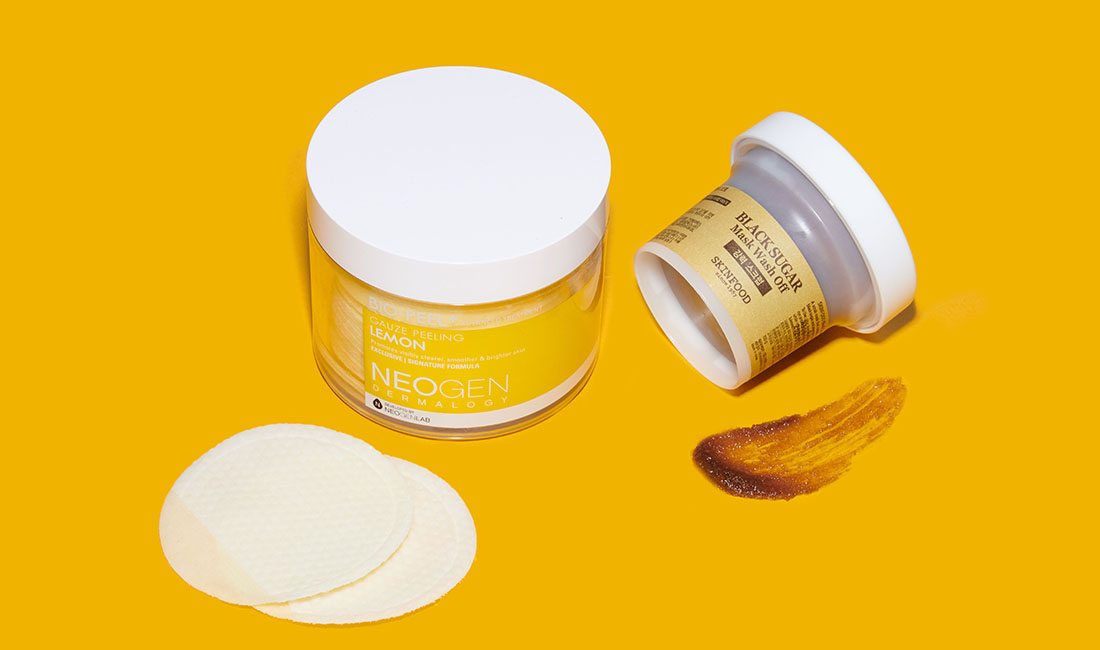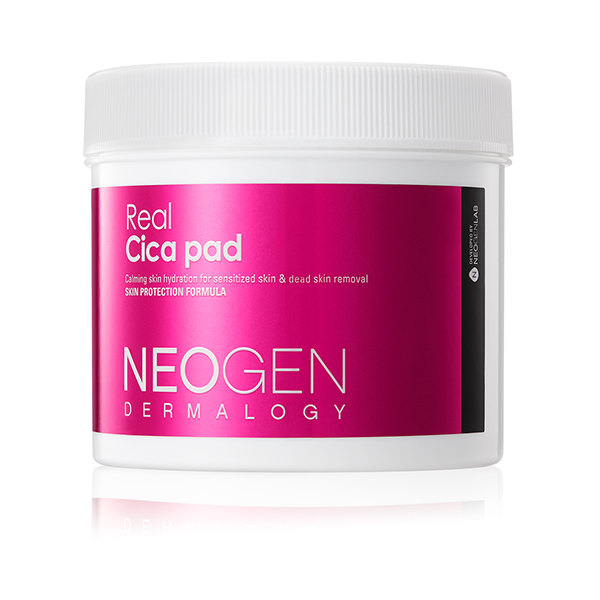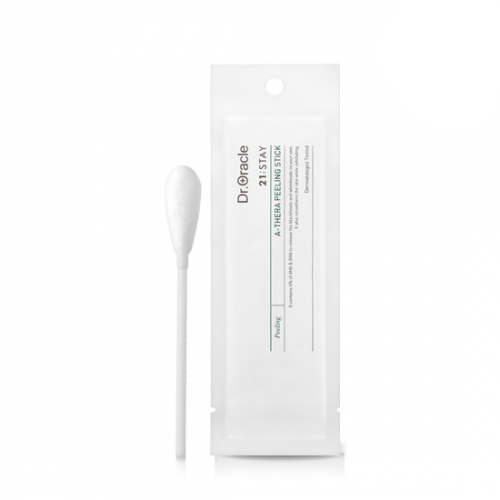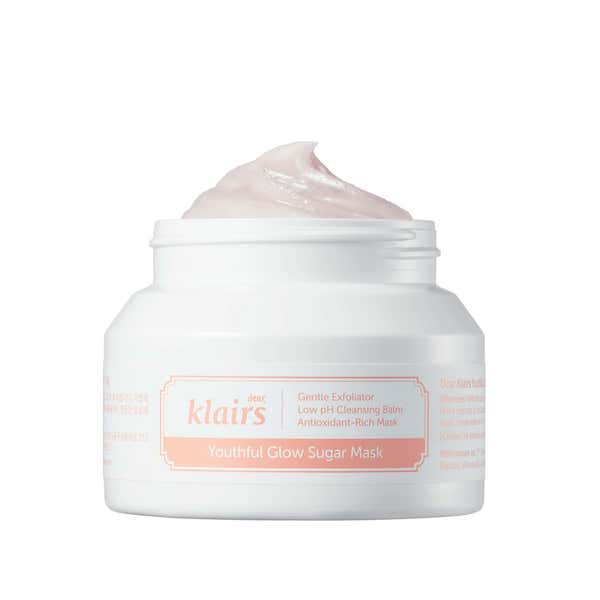There’s no doubt that exfoliation is an essential part of any skin care routine, but you may have doubts about what type of formula you should use. Here, we explain.
It’s the age old skin care question: What kind of exfoliator should you use? Is there one that’s better than the other? There’s no one-size-fits-all answer, so we’re equipping you with everything you need to know about making the decision below.
What is physical exfoliation?
Physical exfoliators are often seen in the form of scrubs and gels and use small granules—such as sugar, walnut shells, salt, or coffee grounds—to physically remove dead skin cells that can make skin dull and flaky and clog pores.
If you’re into skin care, you probably already know that a lot of your run-of-the-mill drugstore exfoliators can be too harsh and can sometimes cause micro-tears. This is why it’s important to choose an option that’s formulated to be gentle and hydrating.
What is chemical exfoliation?
Chemical compounds that speed up cell turnover are used in chemical exfoliation. The most common are AHAs (alpha hydroxy acids), BHAs (beta hydroxy acids), and PHAs (polyhydoxy acids).
AHAs are water soluble, so they don’t really get into your pores to clean them out, but what they are able to do is break down dead skin cells and improve skin texture and uneven skin tone. BHAs are oil-soluble, meaning they get down into those pores. They’re also anti-inflammatory and anti-bacterial and especially great if you have blackheads and acne.
RELATED: Your Guide to the Most Common Acids Found in Skin Care
Like AHAs, PHAs (polyhydroxy acids) also remove dead skin cells, but because they have a bigger molecular weight, they won’t penetrate as deeply and are thus more gentle on sensitive skin.
How to Choose the Best Method and Product For You
Ask Yourself: Is your skin sensitive?
Sensitive skin is by far one of the trickiest to work with, to the point where if you do have sensitive skin, it’s not uncommon to just want to skip exfoliation all together. The trick here is choosing formulas that also have nourishing and healing ingredients.
The Neogen Dermalogy Real Cica Pads combine both methods of exfoliation but are safe for sensitive skin. Each pad is textured to provide super gentle physical exfoliation and are soaked in a formula that contains PHAs (gluconolactone and lactobionic acid). The formula also features several forms of soothing centella asiatica and hydrating hyaluronic acid.
Ask yourself: Do you have active acne?
You might think having acne shouldn’t affect your exfoliating at all, but that’s not quite true. Remember, acne is an infection. Using a harsh physical exfoliator on the skin when you have active acne can spread the infection around causing more acne.
Instead try a chemical exfoliant like the Dr. Oracle A-Thera Tea Tree Peeling Sticks. These are essentially giant cotton swabs soaked in chemical formula that you can use as spot treatment to help heal your acne. The formula has BHAs to help clear your pores, as well as AHAs lactic acid and glycolic acid to further exfoliate and smooth out the skin. And since this is a spot treatment built for acne, it also comes with tea tree, lemon, and bamboo extracts which will continue to exfoliate without any irritation.
Choose Ingredients That Target Your Skin Concerns
As mentioned above, because BHAs are oil-soluble, a chemical exfoliant with a form of the ingredient is going to be your best best if you have acne or blackheads.
RELATED: The Best Exfoliator For Your Skin Type
In addition to improving dull and flaky skin, the AHA glycolic acid can also help treat fine lines and wrinkles due to its ability to boost collagen production. The AHA lactic acid has moisture-retaining properties which is especially useful if you have dry skin.
The supporting ingredients in an exfoliator can also help you find your perfect formula. For example, the Neogen Bio-Peel Gauze Peeling Lemon pads contain sources of vitamin C to help fade acne scars. If you have dry skin and prefer a physical scrub, the Klairs Youthful Glow Sugar Mask contains moisturizing shea butter and jojoba seed oil along with fine sucrose granules to buff away dead skin cells.






